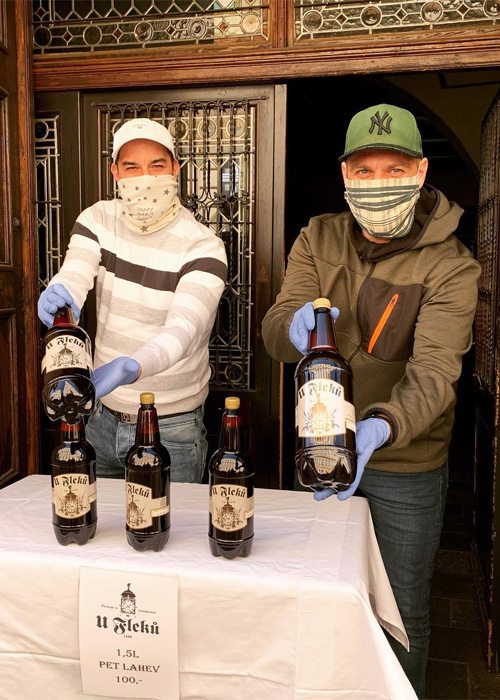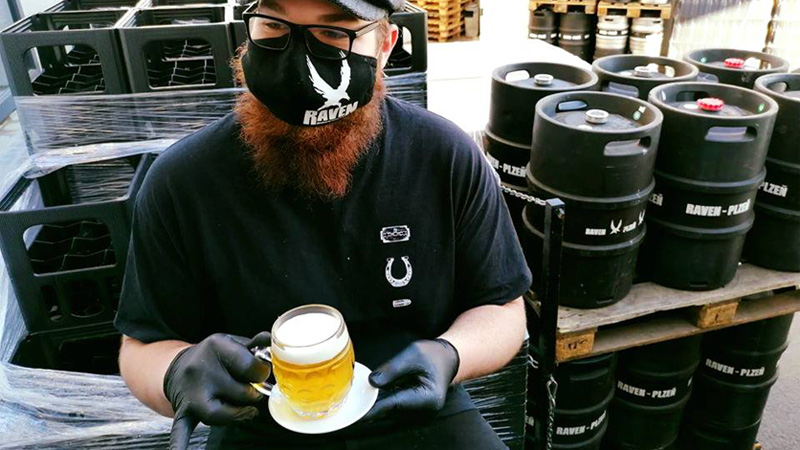
The Czech Republic is a favorite destination of beer history fans, thanks to its role as the home of both the first pilsner and the original Budweisers, which later lent their name to the brand from St. Louis. Beyond that historical importance, the central European country of 10 million inhabitants is also famous for its big contemporary achievement: drinking the world’s largest amount of beer per capita, a rank it has held every year for the past 28 years. With hundreds of charismatic pubs, great beer festivals and atmospheric old breweries like U Fleků, founded in 1499, the Czech Republic’s stunning capital of Prague has long been on the bucket list for beer travelers everywhere.
But a full year after the coronavirus arrived here, and with some of the worst Covid-19 numbers in Europe, the Czech Republic is struggling. Starting the new year with infection and death rates that have ranked among the highest in the world, the country is still largely under lockdown, and has even enacted a ban on drinking alcohol in public, which certainly won’t help local beer sales.
“The current situation is catastrophic,” Václav Hořejší, an immunologist at the Czech Academy of Sciences, said in a television interview earlier this month.
While Hořejší was describing the pandemic in general, he could have been talking about the status of the country’s storied beer culture. In the 12 months since the virus was first detected in the Czech lands on March 1, 2020, the Czech beer industry has been deeply impacted. With the hospitality business under a series of lockdowns, it’s difficult to know exactly how many pubs have closed for good; scores of breweries have also closed, at least temporarily. Fans of Czech brewing are left wondering: How much will things change?
Tomáš Maier, an economist at the Czech University of Life Sciences who studies the beer industry, says the decrease in the duty paid on beer is the most accurate measure of the decline in terms of production. “In total, there was a decrease of 12.4 percent,” Maier says. “Small breweries, with an annual production up to 10,000 hectoliters [about 8,500 barrels], decreased by 14.5 percent, while big breweries with an annual production of over 200,000 hectoliters [about 170,000 barrels] decreased by 11.6 percent.”
Those numbers gain greater weight when one considers the outsize importance of beer for the Czech populace, for whom brewing, malting, and hop-growing remain major industries. The Czech Republic might be the world’s 86th largest country in terms of its population, but it ranks 19th in total beer consumption, according to the most recent Global Beer Consumption Report, published by Kirin at the end of 2020. The country’s world-beating per-person average beer consumption hit 188.6 liters (about 399 U.S. pints) in 2019, outpacing its southern neighbor Austria, in second place, by more than 80 liters per person. The average Czech drinks almost twice as much beer as the average German, and more than two and a half times as much beer as the average American.

But with an ongoing lockdown in the country, those numbers are changing — as is how people drink beer here.
In the Czech Republic, “beer” has long meant “on draft,” with bottles and cans ranking behind kegs in terms of total volumes sold. During the pandemic, packaged beer sales grew substantially, according to Grant McKenzie, chief marketing officer for Asahi Europe, the owner of Pilsner Urquell and three other large Czech breweries.
“In the total market, on-trade [draft beer] is heavily down, but retail — packaged goods, cans, and bottles — is up,” McKenzie says. “It doesn’t compensate, but it’s up.”
The switch to drinking cans and bottles at home marks a change that could threaten a beloved local institution: the traditional Czech hospoda, or pub.
“I’m most afraid that people won’t be used to going to pubs anymore,” Maier says. “That really scares me.”
While all pubs and restaurants are currently closed in the Czech lands, they have been allowed to open off and on throughout the pandemic, after a strong initial lockdown that started on March 14, 2020. With infection rates low in the spring, pubs and restaurants were allowed to reopen on May 25, staying open for most of the summer before being forced to close again with a rise in infections in the fall. A few, like the beloved Prague beer bar Pivovarský Klub, called it quits for good in mid-2020.
For Pivovar Raven, a craft brewery located in the Czech Republic’s historic brewing city of Pilsen, that has meant a big change in how it sells its beer. Before, most of Pivovar Raven’s beer went into kegs before heading on to bars like Pivovarský Klub; now, the vast majority of Pivovar Raven’s production goes into bottles. Being able to sell directly to consumers has helped the brewery survive, according to Filip Miller, one of its owners.
“If people want our beer, they can always come to the window and get bottles,” Miller says. “For us, it was good when drinking in public was still allowed. Even when the pubs were closed, a lot of people would come to the window. We’ve got a park across the road. That’s pretty good, it’s socially distanced. You’d see two people here, two people there, but it’s a big park, so they’ve got space between them.”
During the pandemic, the brewery has also seen growth through its online shop, which offers speedy home delivery. For Miller, small Czech breweries like his simply have to adapt.
“The breweries who have got through it fairly well have improvised and tried new things,” Miller says. “We’ve had a bunch of new beers come out. When we’ve got something new, people want it pretty quickly.” In recent months, Pivovar Raven released Triple Lockdown, its first triple IPA, as well as a Lemon Cheesecake Pastry Sour. Both disappeared posthaste, Miller says.
Large Czech breweries have also made changes. Budvar 33, a new beer widely released in cans and bottles in the middle of the pandemic, is at least partially responsible for the growth in sales at state-owned Budvar, the large brewery in the southern Czech city of České Budějovice, or Budweis in German, often called the original Budweiser. Beloved by both Germans and German-Americans, the legendary “Budweiser” lagers from České Budějovice served as the inspiration for Anheuser-Busch’s beer of the same name.

Another unusual development came from the giant Asahi-owned brewery Radegast, located in the country’s east. Last spring it released its new Ratar, a pale lager with 4.3 percent alcohol and an unusually high bitterness level of 50 IBUs.
With the arrival of warmer weather, Miller is hoping that restriction might be lifted this spring, especially if the spread of the pandemic slows.
“I assume opening pubs won’t be possible for a quite a while, but I don’t see why beer gardens can’t open,” Miller says. “And I think if beer gardens open, we’ll be OK.”
For the economist Tomáš Maier, Czech beer is surviving, despite the drop in production. While a few breweries have closed for good recently, none of those closings seems to have been directly caused by the pandemic. The pandemic might have changed the way Czechs drink their favorite beverage, at least temporarily, he says, but the arrival of vaccines this spring and summer might change things back.
“I want to believe that when the Czech population is vaccinated, everything will return to normal,” he says. “I’m really looking forward to beer festivals.”
This story is a part of VP Pro, our free platform and newsletter for drinks industry professionals, covering wine, beer, liquor, and beyond. Sign up for VP Pro now!
